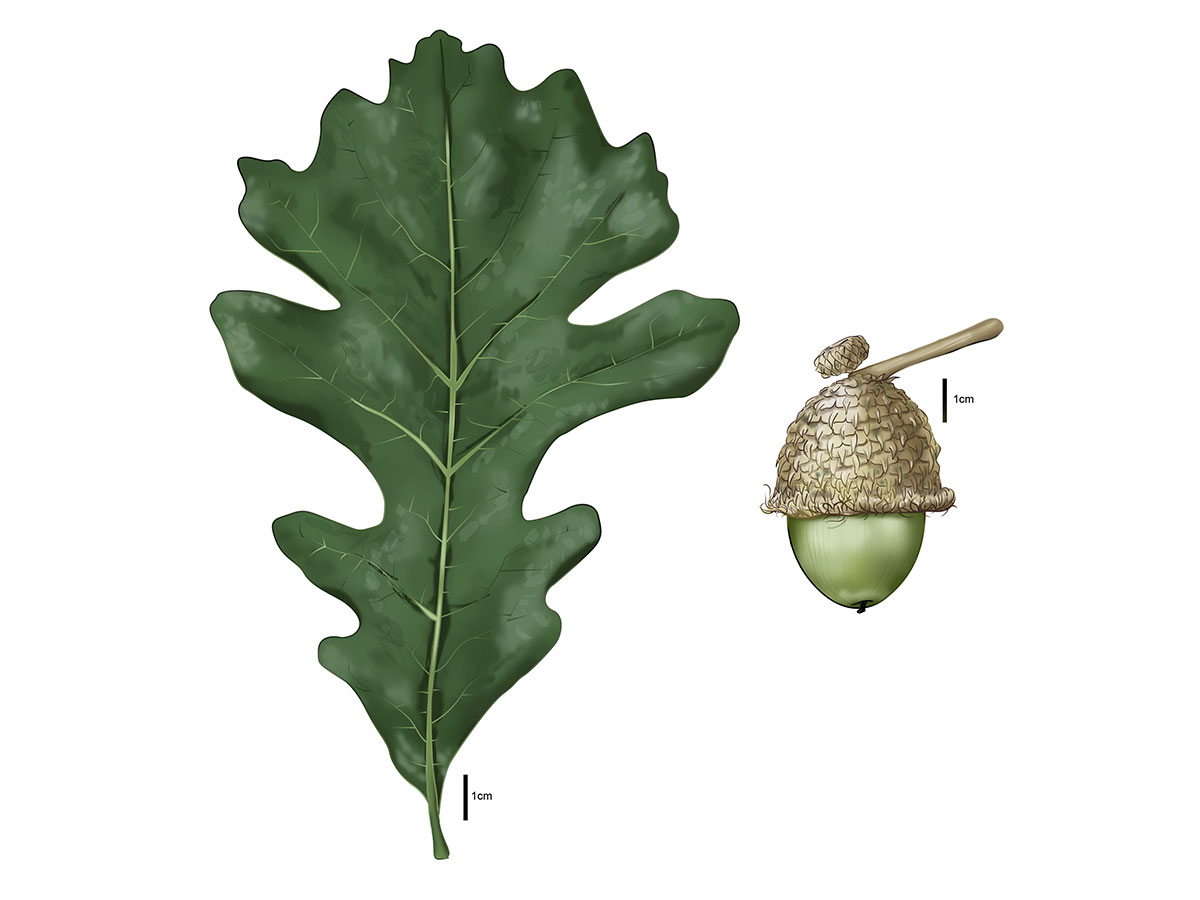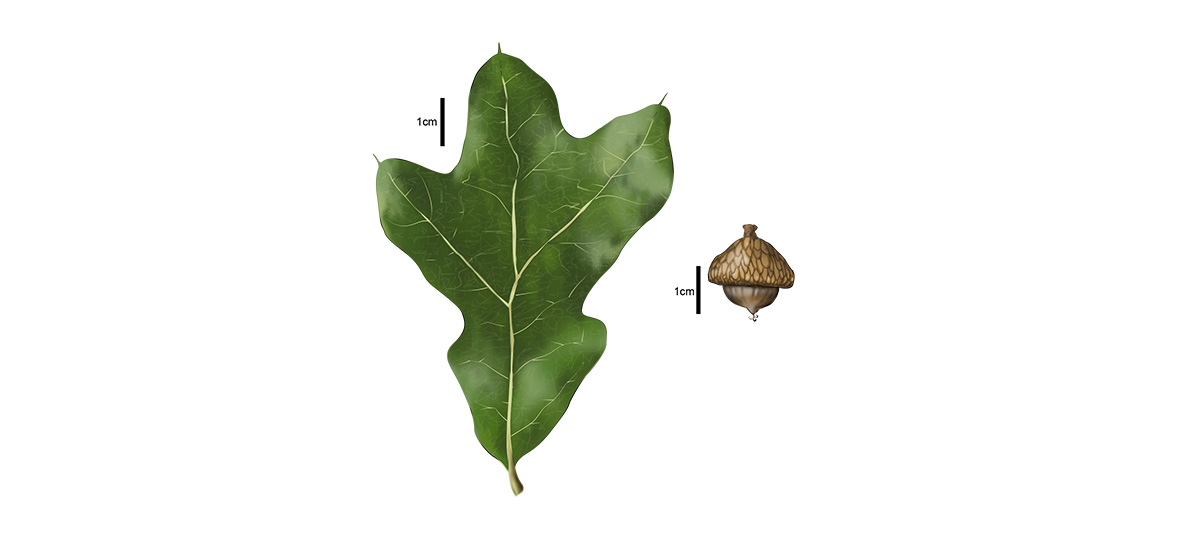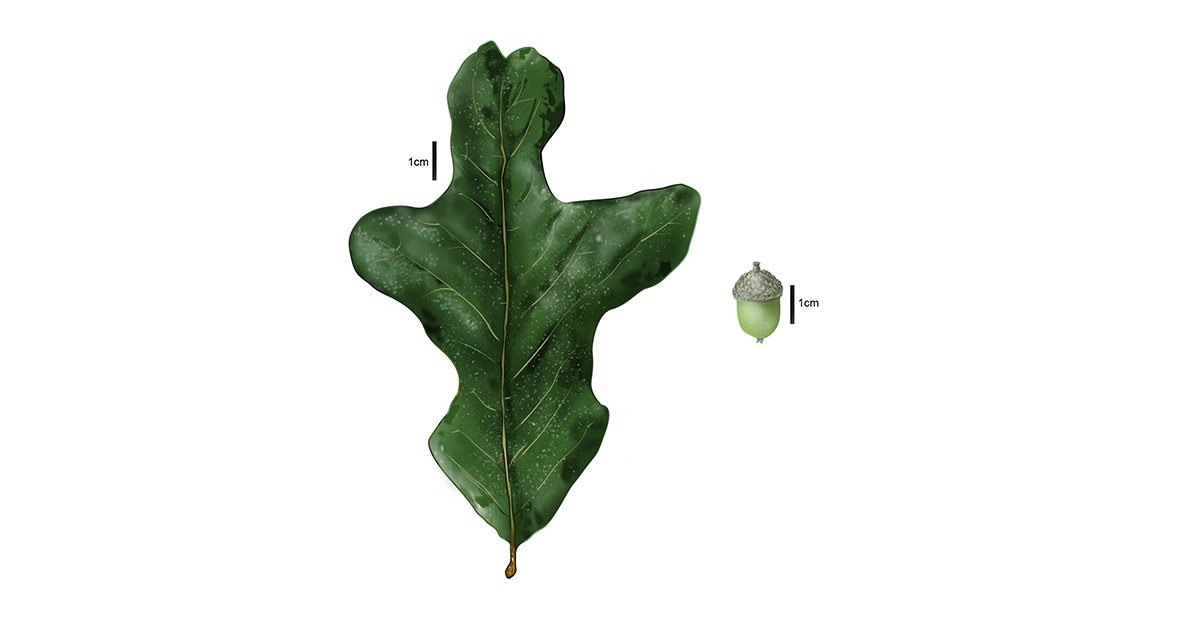Querc-y Characters
The dark bark, glossy leaves and tiny acorns of escarpment live oaks (Quercus fusiformis) are emblematic of Texas, but the Lone Star State is home to plenty of other native oaks. In fact, Texas hosts the greatest diversity of oaks (Quercus spp.) in the U.S. We did our hardwood homework to help you recognize the subtle differences between four common Central Texas species.
ILLUSTRATIONS Samantha N. Peters
Bur Oak
(Quercus macrocarpa)
- Largest leaves of all oaks in Central Texas, with deep sinuses between lobes
- Leaves are glossy on top with slightly fuzzy, lighter gray-green undersides
- Very large acorns have coarse, scaled caps and shaggy, fringed margins
- Very large tree, can reach 100 feet tall
- More info
White Shin Oak
(Quercus sinuata var. breviloba)
- Small, narrow leaves are irregularly and shallowly lobed, giving them a wavy look
- Bark is light gray and shaggy
- Trees often grow in thickets
- Small, even shrublike tree reaching ~30 feet tall
- More info
Blackjack Oak
(Quercus marilandica)
- Leaf lobes have bristles or points on the tips
- Leaves have a triangular trend; prominent veins resemble a chicken foot
- Black bark, especially toward tree base
- Smaller tree, reaching ~40 feet tall
- More info
Post Oak
(Quercus stellata)
- Leaves often resemble a cross due to a prominent pair of lobes
- Darker green leaf with light green or yellowish underside
- Trunks trend straight (hence the name)
- Tall tree, reaching 40 to 50 feet
- More info




